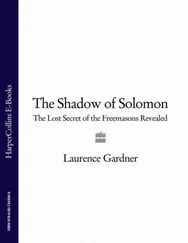511 In other words a large generation of parents born when fertility was still high. Population momentum also works in reverse—for example, elderly countries would continue to shrink even if fertility were increased, owing to a small generation of parents born when fertility was low.
512 As a percentage of GNP, over the period 1880-1913 national investment and national savings were more strongly correlated in the industrialized countries than they were in 1999, meaning that investment today relies more on domestic saving and less on foreign investment than it did in 1913. Pp. 89-90 and Figure 3.3, P. Knox et al., The Geography of the World Economy, 4th ed. (New York: Oxford University Press, 2003), 437 pp.
513 Just before World War I broke out, merchandise trade averaged 12% of gross national output for industrialized nations, a level not attained again until the 1970s. P. 32, M. B. Steger, Globalization: A Very Short Introduction (New York: Oxford University Press, 2003), 147 pp.
514 Global Trends 2025: A Transformed World (Washington, D.C.: U.S. National Intelligence Council, 2008), 99 pp.
515 “Green with Envy: The Tension between Free Trade and Capping Emissions,” The Economist, November 21, 2009.
516 Nataliya Ryzhova and Grigory Ioffe document hyberbolic assertions ranging from ten to twelve million Chinese already inside Russia to predictions of forty million by the year 2020. Russian migration scholars estimate a current figure of only four hundred thousand Chinese. N. Ryzhova, G. Ioffe, “Trans-border Exchange between Russia and China: The Case of Blagoveshchensk and Heihe,” Eurasian Geography and Economics 50, no. 3 (2009): 348-364, DOI:10.2747/1539-7216.50.3.348.
517 Ryzhova and Ioffe note thirty-four thousand Chinese labor migrants in Amur Oblast versus an official statistic of just 435. Ibid.
518 B. Lo, “The Long Sunset of Strategic Partnership: Russia’s Evolving China Policy,” International Affairs 80, no. 2 (2004): 295-309. This contested island was finally ceded to China in 1991.
519 W-J Kim, “Cooperation and Conflict among Provinces: The Three Northeastern Provinces of China, the Russian Far East, and Sinuiju, North Korea,” Issues & Studies 44, no. 3 (September 2008): 205-227. “Development of Trade and Economic Collaboration between China and Primorye Discussed in Vladivostok,” http://vladivostoktimes.ru/show/?id=48916&p= (accessed March 11, 2010).
520 In 2004 Turkey signed a deal to send water by supertanker to Israel. The program has since struggled off and on, but Israel has floated the idea of a water pipeline from Turkey. C. Recknagel, “Can ‘Wet’ Countries Export Water to ‘Dry’ Ones?” Radio Free Europe, March 21, 2009, www.rferl.org/Content/Can_Wet_Countries_Export_Water_To_Dry_Ones/1514322.html.
521 As of 2009 the eastern route is mostly done, the central route is anticipated for 2014, and the controversial western route through mountains slated for completion in 2050. S. Oster, “China Slows Water Project,” The Wall Street Journal, December 31, 2008.
522 P. Annin, The Great Lakes Water Wars (Washington, D.C.: Island Press, 2006), 303 pp.
523 Québec premier Robert Bourassa and future prime minister John Turner. R. MacGregor, “A Visionary’s Epiphany about Water,” The Globe and Mail, October 5, 2009, www.theglobeandmail.com/news/national/a-visionarys-epiphany-about-water/article1311853/. See also pp. 60-63, P. Annin, The Great Lakes Water Wars (Washington, D.C.: Island Press, 2006), 303 pp.
524 Modeling studies suggest that the GRAND Canal project would delay spring ice-out on Hudson Bay as much as a month each year, causing colder, wetter conditions locally during the peak of the growing season, a change in coastal flora, the retreat of forests from the coast, and the growth of permafrost. W. R. Rouse, M-K Woo, J. S. Price, “Damming James Bay: 1. Potential Impacts on Coastal Climate and the Water Balance,” The Canadian Geographer 36, no. 1 (1992): 2-7.
525 F. Pierre Gingras, “Northern Waters: A Realistic, Sustainable and Profitable Plan to Exploit Quebec’s Blue Gold,” Montreal Economic Institute, Economic Notes (special edition, July 2009), www.iedm.org/uploaded/pdf/juillet09_en.pdf.
526 P. Micklin, “‘Project of the Century’: The Siberian Water Transfer Scheme,” paper prepared for Engineering Earth; the Impacts of Megaengineering Projects, University of Kentucky, July 21-24, 2008.
527 In 2004. “Luzhkov Wants to Reverse a River,” The Moscow Times, December 10, 2002; N. N. Mikheyev, “ Voda bez granits (Water without Limits),” Melioratsiya i vodnoye khozyaystvo 1 (2002):32-34; see also F. Pearce, “Russia Reviving Massive River Diversion Plan,” New Scientist, February 9, 2009, www.newscientist.com/article/dn4637-russia-reviving-massive-river-diversion-plan.html?full=true.; and P. Micklin, “The Aral Sea Crisis and Its Future: An Assessment in 2006,” Eurasian Geography and Economics 47, no. 5 (2006): 546-567, DOI:10.2747/1538-7216.47.5.546.
528 The Ob’, Yenisei, and Lena rivers dump significant amounts of freshwater into the Arctic Ocean, much of which freezes into sea ice, then eventually flushes out through Fram Strait or the Canadian Archipelago toward the North Atlantic, where it melts, freshening ocean surface waters and thus impeding deepwater sinking of the thermohaline circulation.
529 The European Space Agency’s first CryoSat satellite cost about €140 million but was destroyed in a 2005 launch failure; a follow-up CryoSat-2 was built and launched successfully in April 2010. NASA launched its first ICESat in 2003 and is building two more ice-seeking satellites, ICESat-II and DESDynI, slated for launch around 2015; a total capital investment of USD $2 billion seems likely for these three satellite missions. For more background, see Earth Science and Applications from Space: National Imperatives for the Next Decade and Beyond , Committee on Earth Science and Applications from Space: A Community Assessment and Strategy for the Future (Washington, D.C.: National Research Council, 2007), ISBN: 978-0-309-10387-9, 456 pp.
530 This paragraph refers to details presented earlier in the book, including U.S. naval exercises off Alaska’s North Slope, Norway’s recent purchase of five Aegis-armed frigates and nearly fifty F-35 fighter jets, and Samsung’s pursuit of a polar tanker vessel to transport liquefied natural gas from Arctic waters. The total amount received by the U.S. Minerals Management Service from energy companies for an Arctic offshore lease sale totaled USD $2.7 billion in 2008.
531 Arctic Council, AMSA, Arctic Marine Shipping Assessment 2009 : 77-79.
532 From GIS analysis of global map data I calculate the following in square kilometers for the world’s planetary surface area, land extent, ice-free land extent, and ice-free/permafrost-free land extent, respectively. World: 508,779,504 km 2, 147,263,072 km 2, 132,801,596 km 2and 109,508,640 km 2, respectively. North of 45° N: 74,697,936 km 2, 40,364, 452 km 2, 38,212,960 km 2, and 17,100,072 km 2. North of Arctic Circle: 21,239,512 km 2, 7,930,424 km 2, 6,159,648 km 2, and 271,632 km 2. By all measures, we see the Arctic proper (between 66.55º and 90º N latitude) is truly a tiny place.
533 This particular geographic definition of the “Arctic,” proposed in the 2004 Arctic Human Development Report, encompasses all of Alaska; Canada north of 60° N latitude together with northern Québec and Labrador; all of Greenland and the Faroe Islands; Iceland; the northernmost counties of Norway, Sweden, and Finland; and in Russia the Murmansk Oblast, the Nenets, Yamalo-Nenets, Taimyr, and Chukotka autonomous okrugs, Vorkuta City in the Komi Republic, Noril’sk and Igarka in Krasnoyarsky Kray, and parts of the Sakha Republic lying closest to the Arctic Circle. Pp. 17-18, Arctic Human Development Report (Akureyri, Iceland: Stefansson Arctic Institute, 2004), 242 pp.
Читать дальше












